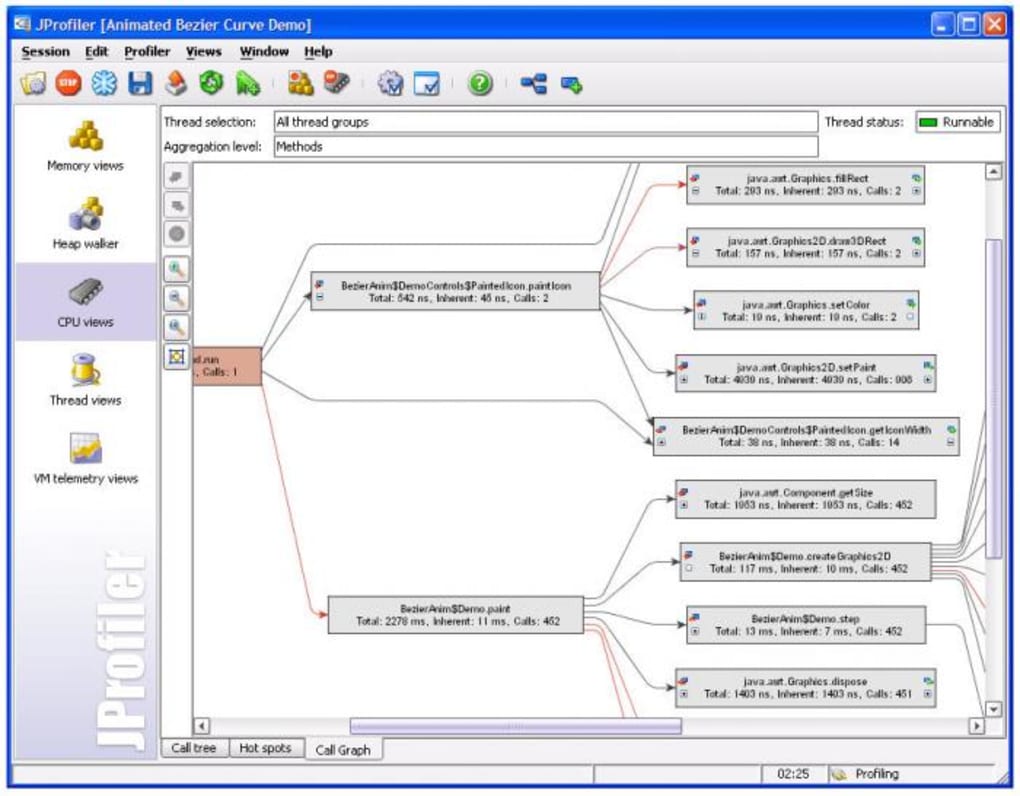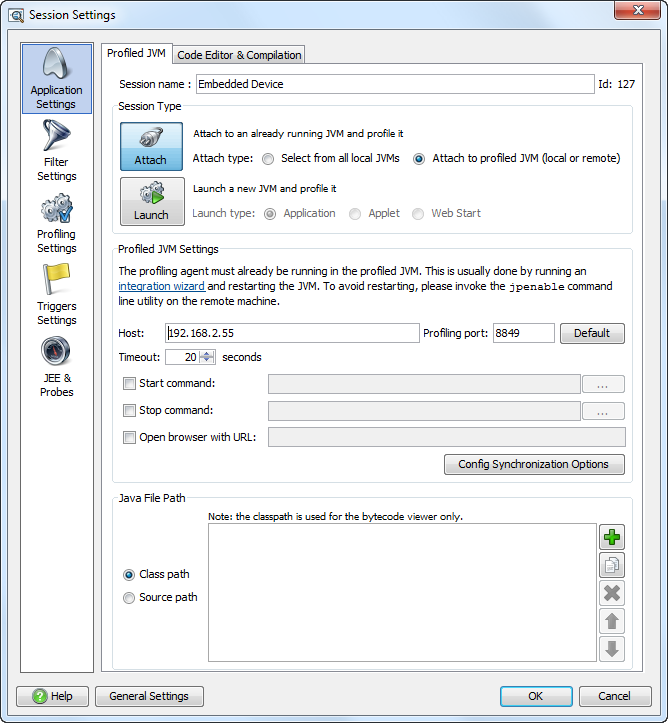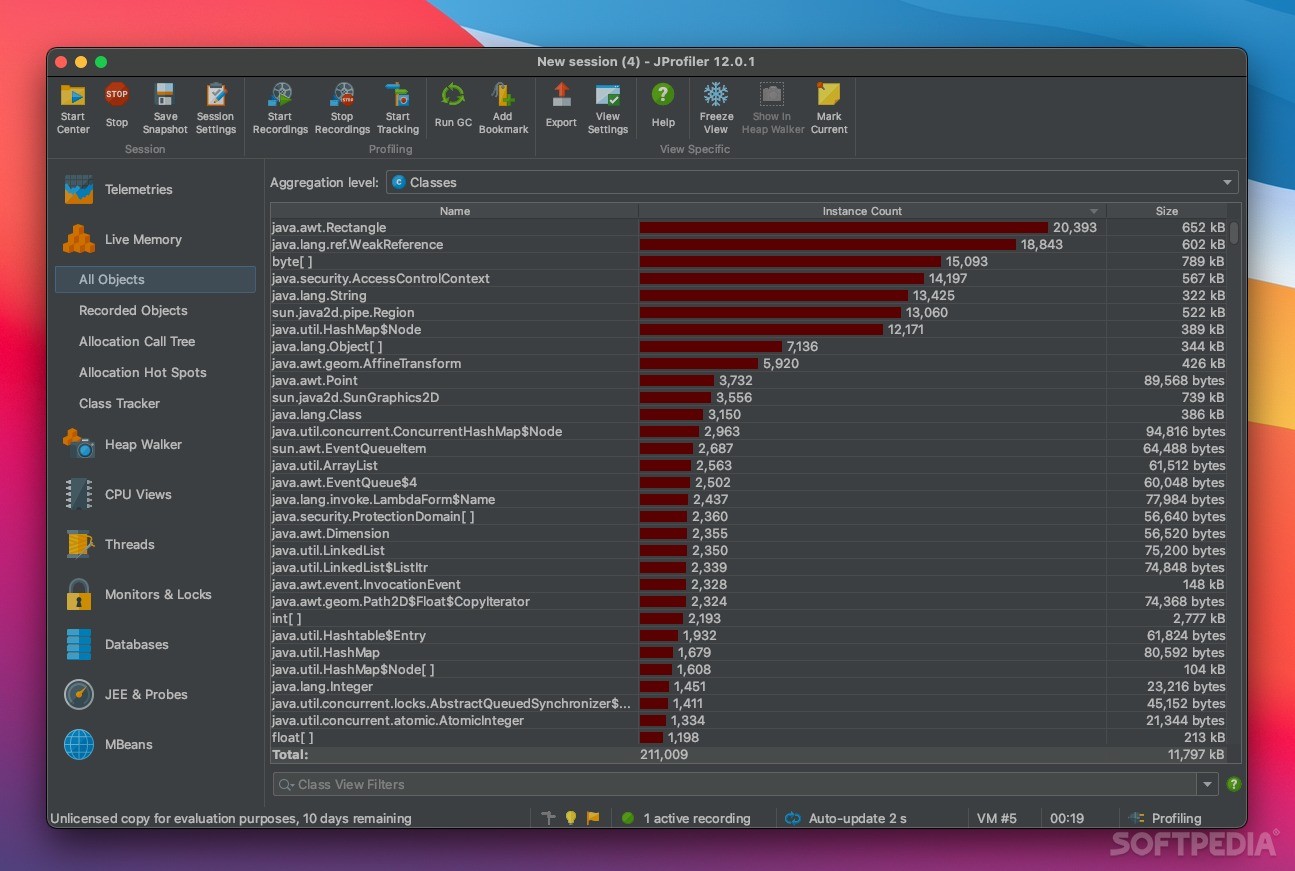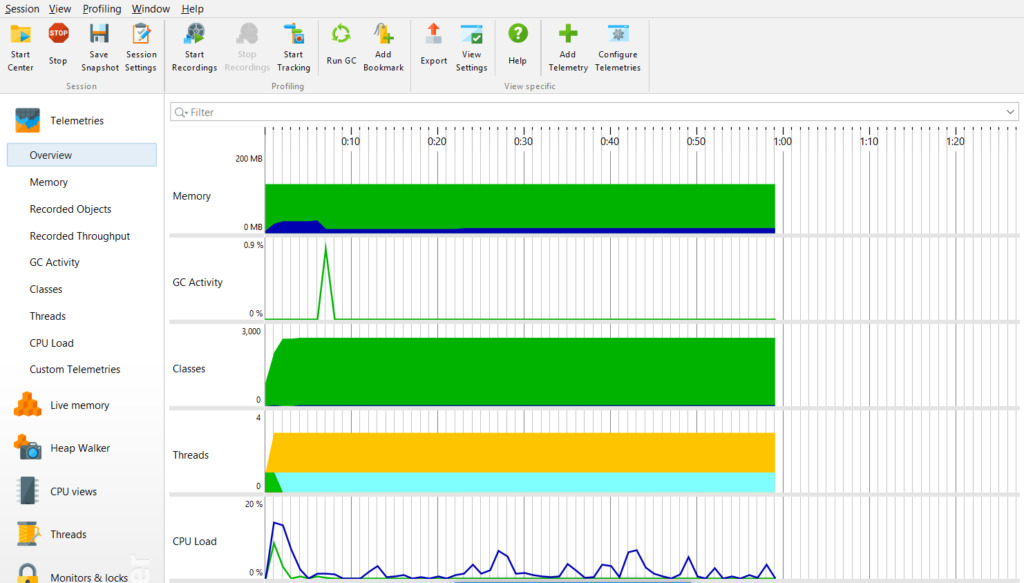

- JPROFILER MEMORY LEAK TUTORIAL FULL
- JPROFILER MEMORY LEAK TUTORIAL CODE
Why Java is better than C++ for high speed trading systems. Review of OpenTelemetry and how it fits into the measurement landscape using an open source implementation (the Elastic one) with a running example. 
An exercise in latency reduction with some lessons learned.Java performance tuning related news (not memory leak related) For native memory leaks from JNI managed memory, you need to use a native memory profiler like jemalloc, etc.For native leaks from JVM managed memory pools, you need to turn on native memory tracking eg -XX:NativeMemoryTracking=detail (can be on in production but has a 10% performance impact) and take a difference against a baseline (jcmd VM.native_memory baseline, jcmd PID VM.native_memory detail.diff).
JPROFILER MEMORY LEAK TUTORIAL CODE
For heap leaks reproducible outside production, any memory profiler with stack allocation traces (eg visualvm) can find the allocating method and even the line of code (the latter if line information hasn't been stripped from the class files). To identify the code location in heap leaks that can't be reproduced outside production, you are restricted to JFR recordings, looking at "live objects" (the recording needs to be from JDK10+ as it needs Old Object Sample events). Where is it leaking from (the code where the objects are created and/or assigned)?. But with native leaks there is the additional possibility that it is an old-fashioned C-style memory leak which is memory incorrectly not reclaimed by the JNI code, in this last case no object is keeping the memory alive, it's now just memory that is no longer managed in the process space. But the techniques to find the leak and root holding the leak live is the same as for heap leaks A native leak where the leak is from objects being kept alive in the heap that are pointing at native memory is similar to a heap leak - only more difficult to see because the heap side is quite small. Again auto-analysis capability often identifies this for you, but in the absence of that you will most likely need either a heap dump or a JFR recording taken with path-to-gc-roots=true to find this. What is keeping the objects alive (what instances in the app)?. If you can reproduce the leak outside of production, any significant increases in generation counts can quickly identify leaking objects (using any profiler that shows generation counts, eg visualvm). JPROFILER MEMORY LEAK TUTORIAL FULL
Comparing two histograms separated over time (with both taken just after full GCs) should identify the objects very clearly. In the absence of auto-analysis (or in addition for confirmation) a class histogram (from jmap or a heap dump or JFR) will suggest the leaking objects, but one histogram alone is usually not enough. Obviously any auto-analysis capability (such as from JMC or Eclipse MAT) makes this straightforward as it will suggest the leaking object types. What is leaking (instances of which classes)?. If the leak is on the native side, you should check the various memory pools in the JMX metrics to see if it's leaking in any of these JVM managed memory areas or outside of JVM management (typically from JNI). If it's leaking on the native side, you'll see the heap staying roughly the same overall, but PSS increasing. On the native side you can track process size with Proportional Set Size memory tracking: PSS = Private Physical Memory + Shared Physical Memory / Number of Multi-Mappers. On the heap side you can track heap usage via GC logs, JMX GC metrics (eg using JConsole or equivalent), JFR GC events (it's easiest to view these from JMC). This is the same for all types of leak, you need to track memory to see if it's increasing after Full GCs. Do I have a leak (and does it needs fixing)?. The same 4 step-by-step procedure applies to all these leaks: 
This month I'm extending my special newsletter on memory leaks, adding JFR memory leak analysis and native memory leak analysis to the heap analysis focus from that previous special newsletter. The classic and most comprehensive book on tuning Java We can provide training courses to handle all your Java performance needs Get rid of your performance problems and memory leaks!ĬOURSES AVAILABLE NOW. Training online: Concurrency, Threading, GC, Advanced Java and more.

JProfiler: Get rid of your performance problems and memory leaks! Our valued sponsors who help make this site possible News December 2020 Java Performance Tuning








 0 kommentar(er)
0 kommentar(er)
